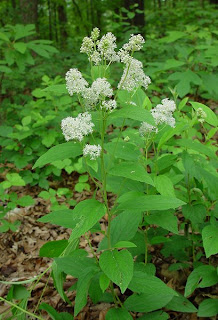CINNAMON

Latin Name: Cinnamomum zeylanicum
Alternate Names: Cassia, Sweet Wood, Gui Zhi
Family: LAURACEAE
Parts Used: Inner bark, twigs.
Properties: Antibacterial, Antifungal, Aphrodisiac, Carminative, Digestive Tonic, Diuretic, Stimulant
Internal Uses: Arthritis, Bedwetting, Colds, Colic, Cough, Diarrhea, Dysentery, Dysmenorrhea, Flatulence, Flu, Headache, Indigestion, Nausea, Vomiting
Internal Applications: Tea, Tincture, Capsules
When making a tea, do not boil for more than a few minutes or the taste will become bitter.
Cinnamon is a delicious herb, used to improve circulation. Its prolonged use is known to beautify the skin and promote a rosy complexion. It helps to dry dampness in the body. Use for people who are always cold and have poor circulation. Inhale on a hollow stick of cinnamon if trying to quit smoking.
When making a tea, do not boil for more than a few minutes or the taste will become bitter.
Cinnamon is a delicious herb, used to improve circulation. Its prolonged use is known to beautify the skin and promote a rosy complexion. It helps to dry dampness in the body. Use for people who are always cold and have poor circulation. Inhale on a hollow stick of cinnamon if trying to quit smoking.
Topical Uses: Athlete's Foot, Cigarette Addiction, Fungal Infection
Topical Applications: Use as a hair rinse for dark hair, or as a toothpaste flavoring to freshen breath. As a wash, it prevents and cures fungal infections such as athletes foot. Use in massage oil for lovers. Place Cinnamon in sachets to repel moths.
Culinary uses: Apple dishes, baked goods, chocolate, coffee, curries, French toast, egg nog, teas, pickles, puddings, rice dishes, wine.
Energetics: Sweet, Pungent, Hot, Dry.
Chemical Constituents: Cinnamaldehyde, gum, tannin, mannitol, coumarins, essential oils (aldehydes, eugenol, pinene).
Contraindications: Avoid during hot, feverish conditions. Not for hemorrhoids, dry stools or blood in the urine. Avoid large amounts during pregnancy.
Comments: Cinnamon was used in ancient Egypt for embalming. In ancient times it was added to food to prevent spoiling. During the Bubonic Plague, sponges were soaked in cinnamon and cloves and placed in sick rooms. It was the most sought after spice during explorations of the 15th and 16th centuries. It has also been burned as an incense. The smell of Cinnamon is pleasant, stimulates the senses, yet calms the nerves. Its smell is reputed to attract customers to a place of business.
The common name Cinnamon encompasses many varieties, including Cinnamomum cassia and Cinamomum saigonicum, which are used interchangeably with Cinnamomum zeylanicum.
The common name Cinnamon encompasses many varieties, including Cinnamomum cassia and Cinamomum saigonicum, which are used interchangeably with Cinnamomum zeylanicum.

